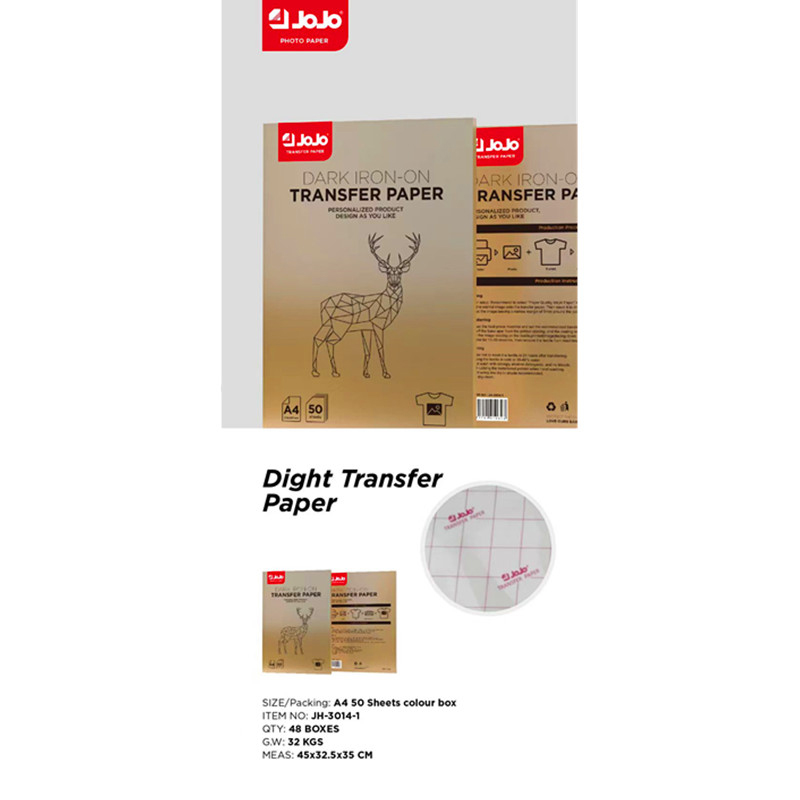If you need any help, please feel free to contact us
Double-Sided Transfer Papers For Two-Way Applications
In the world of digital printing and textile decoration, double-sided transfer papers have become an increasingly versatile material. These specialized papers enable printing on both sides, which opens up a variety of applications that require flexibility and efficiency. This article explores the features of double-sided transfer papers, their advantages for two-way printing applications, and how they relate to other common print media such as 200 gsm photo paper, glossy and matte photo paper, and even cash register thermal paper rolls.

Understanding Double-Sided Transfer Papers
Double-sided transfer papers are designed to accept ink or toner on both faces, allowing printed images or text to be transferred onto substrates from either side. This two-way capability is especially useful in applications such as textiles, labels, signage, and custom merchandise, where the reverse side might also need decoration or information.
The manufacturing process involves coating both sides of the paper with layers that support ink adhesion and release during heat transfer. This coating must balance between sufficient durability for printing and the ability to cleanly release the ink when heat and pressure are applied.
Key Features and Benefits
One primary benefit of double-sided transfer papers is their efficiency in workflows that require printing on both sides of an object or fabric. For example, a double-sided printed fabric can be produced in a single process without needing separate transfers for each side, reducing production time and material usage.
Moreover, this paper type supports various printing technologies, including inkjet and laser printers, which enhances its adaptability. When selecting transfer papers, it’s important to consider the paper weight, as this impacts handling, print quality, and transfer performance.
This brings us to a common comparison with other printing substrates like 200 gsm photo paper, which is often used in photographic prints and fine art reproductions. The 200 gsm weight indicates a relatively sturdy and thick paper, providing durability and high-quality image presentation. While 200 gsm photo paper is generally single-sided and intended for direct display, double-sided transfer paper’s coatings allow for heat transfer applications on textiles and other materials.
Glossy and Matte Photo Paper vs. Transfer Paper
In print media, glossy and matte photo paper remain popular choices depending on the desired aesthetic effect. Glossy photo paper offers a shiny, reflective surface that enhances color vibrancy and contrast, making it ideal for photographic images or promotional prints. Matte photo paper, on the other hand, has a non-reflective finish that reduces glare and is favored for artistic prints or where subtlety is preferred.
Double-sided transfer papers can emulate aspects of both finishes through specialized coatings. For example, some transfer papers have a glossy side for vibrant images and a matte side for more muted designs, allowing designers to choose based on the intended look and feel of the final product. This flexibility is valuable in creative industries such as fashion and interior decoration, where the texture and finish of prints affect the consumer experience.
Related Materials: Cash Register Thermal Paper Rolls
While double-sided transfer papers serve specific printing and heat transfer needs, other print media fulfill different roles in commerce and industry. One such material is cash register thermal paper rolls, which are widely used for point-of-sale receipts and transaction records.
Thermal paper rolls are coated with a heat-sensitive layer that darkens when exposed to a thermal print head, enabling quick and efficient printing without ink. Although unrelated to photo or transfer papers in their function, thermal paper rolls share the characteristic of having specialized coatings designed for particular printing technologies.
Understanding the variety of print media, including 200 gsm photo paper, glossy and matte photo paper, and thermal paper rolls, helps manufacturers and print service providers select the more suitable substrate for their specific applications.
Applications of Double-Sided Transfer Papers
Double-sided transfer papers are increasingly employed in custom apparel production, promotional merchandise, and home décor items. Printing logos, artwork, or messages on both sides of fabric can enhance the product's utility and visual appeal. For example, reversible garments with different designs on each side benefit from double-sided printing, which transfer papers facilitate efficiently.
Additionally, double-sided transfer papers are used in specialty packaging and product labeling, where information might need to be visible on the front and back of a package. This capability improves communication with consumers and supports marketing efforts.
Considerations for Good Use
When working with double-sided transfer papers, attention to printer compatibility, transfer temperature, pressure, and dwell time is critical. These factors ensure that the ink properly transfers from both sides of the paper to the substrate without smudging or incomplete transfer.
Moreover, post-transfer durability, including wash resistance for textiles and scratch resistance for labels, depends on both the paper’s coating and the inks used. Selecting transfer papers that match the printing technology and the substrate helps achieve consistent results.
Double-sided transfer papers represent a flexible and practical choice for two-way printing applications, enabling creative and efficient production processes across multiple industries. While related print media, such as 200 gsm photo paper and glossy and matte photo paper, focus on image presentation, double-sided transfer papers specialize in heat transfer functionality for textiles and other substrates.
In addition, materials like cash register thermal paper rolls showcase the diversity of coated papers developed for specialized printing tasks. Together, these products demonstrate the breadth of options available to meet the varied demands of modern printing and transfer technologies.

 English
English Español
Español 中文简体
中文简体 Português
Português

